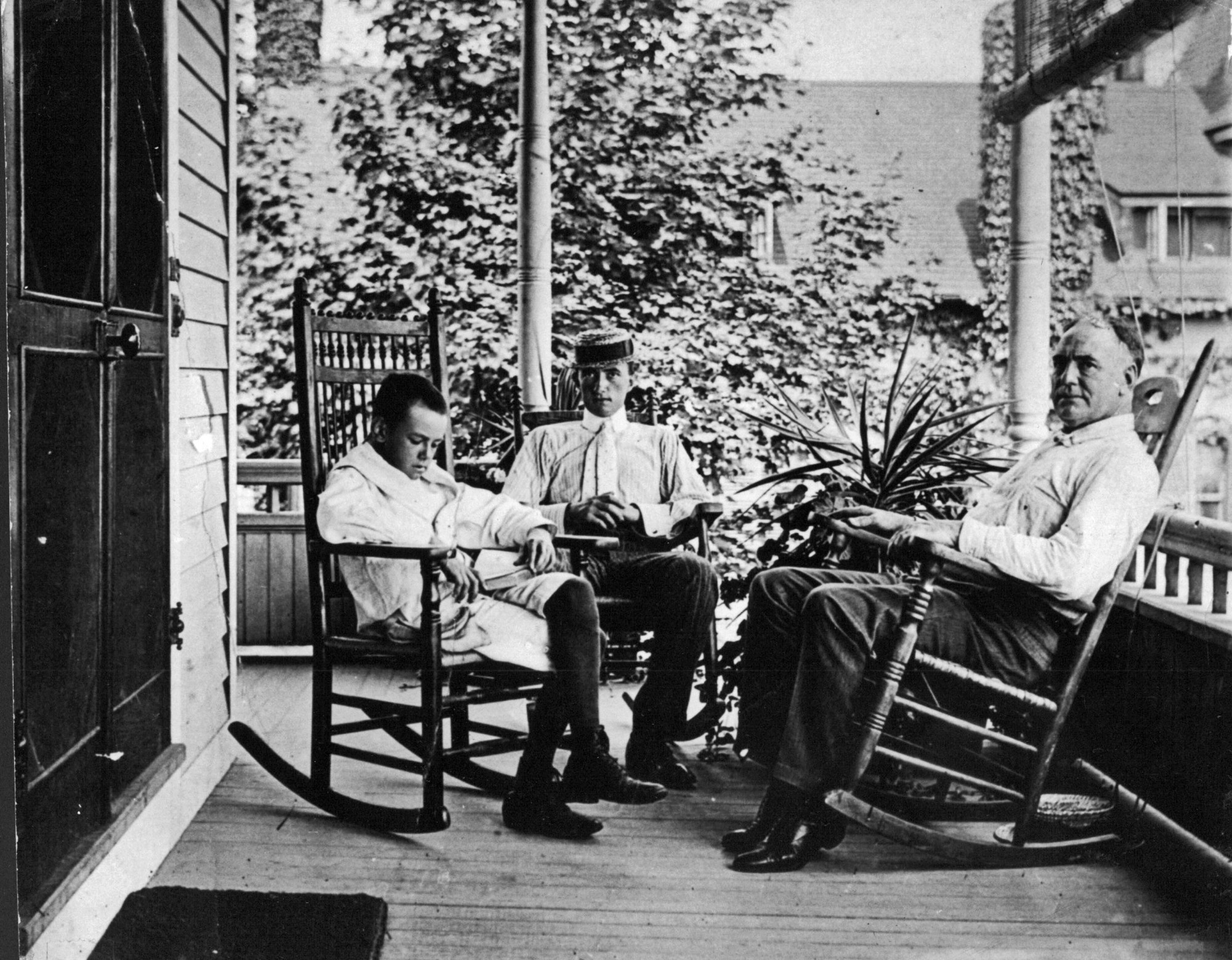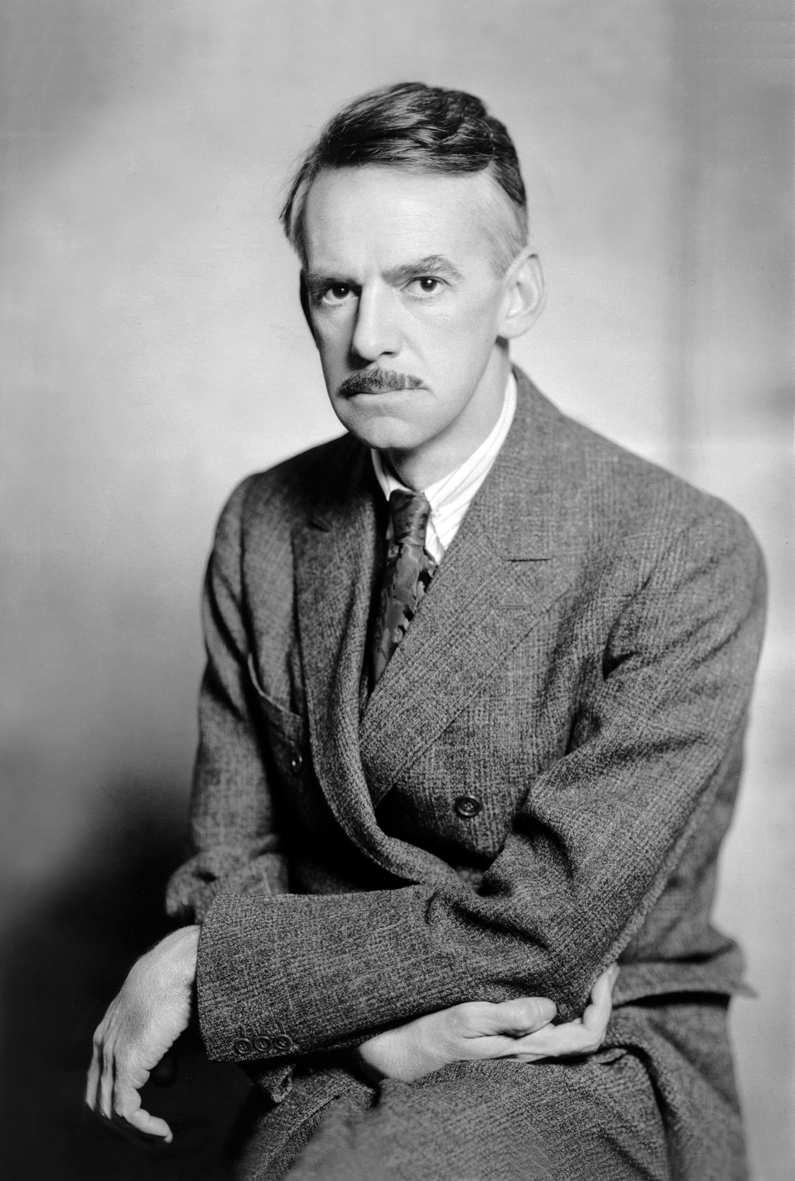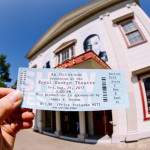This might only appeal to fellow theater geeks, but I am SO excited to share this post.
Back in June I visited the Monte Cristo Cottage in New London, Connecticut, which is where one of America’s greatest playwrights spent his childhood summers. Eugene O’Neill — author of Long Day’s Journey Into Night, Morning Becomes Electra, The Iceman Cometh, and many more distinguished plays — was born in Times Square (there is a plaque commemorating his birthplace outside the Starbucks on 43rd & Broadway). His father, the Irish actor James O’Neill, had become famous for staring in The Count of Monte Cristo. The family would follow James on tour around the country for most of the year and then return to the Connecticut shore for the summer. The cottage was affectionately named after the role that earned James his small fortune.

Eugene, brother Jamie, and father James O’Neill on the porch of their Monte Cristo summer cottage (c. 1900).
But home life was hardly idyllic for Eugene, his older brother Jamie, and their parents James and Mary Ellen (‘Ella’). Despite his income, James was quite stingy. Mary developed a morphine addiction following the birth of Eugene. These details are revealed in detail in Long Day’s Journey Into Night, which Eugene O’Neill wrote later in his life and sealed away with instructions that it should not be published until 25 years after his death, in an effort to put distance between his lifetime and the personal revelations of the play. Shortly after he died, O’Neill’s third wife Carlotta intervened and the play officially premiered 2.5 years later, laying bare painful details from his early family life (his parents and brother had predeceased Eugene). Posthumously, the play won O’Neill his fourth Pulitzer for drama.

Eugene O’Neill, 1888-1953
So that is the backstory of this house in Connecticut — it is the setting for Long Day’s Journey Into Night, which takes place over one day in August 1912 when O’Neill was 23 years old. Interestingly, O’Neill also wrote the play Ah, Wilderness!, which is a counterpoint to Long Day’s Journey — it portrays a bubbly July 4th weekend at the same childhood home, featuring a host of fictional characters who are cheerful and grounded. It is said that Ah, Wilderness! depicts the childhood O’Neill wishes he had, where as Long Day’s Journey portrayed the real deal in all its complexity and gloom.
What a treat for theater lovers to visit the home that inspired these classics. I first saw Long Day’s Journey at a 99 seat theater in Hollywood in 2012. I saw it again earlier this year at the Geffen in LA starring Alfred Molina and Jane Kaczmarek. One week later I saw Ah, Wilderness! at A Noise Within in Pasadena, intentionally stacking those theater experiences to more fully compare these plays back-to-back. And so I made it my mission to finally visit the Monte Cristo Cottage when I got back to CT in late spring.
One more thing before we get to the house — I found out that there is a local theater company in CT called Flock Theater that recently staged Long Day’s Journey IN THE ACTUAL ROOMS OF THE HOUSE, for an intimate audience of 25 people per performance. What a neat thing it must’ve been to witness these lines spoken in the very rooms that inspired them. And since the play happens over one long day, they split up the acts (with breaks in between) so that Act 1 began at 9am, Act 2 at 12:45pm, Act 3 at 7pm, and Act 4 at 8pm, so that the audience experienced the day in real time. If they do it again, I will do anything I can to attend a performance.

Okay, on to the house!

The Eugene O’Neill Theater Center is located a few miles down the road from this house in Waterford, CT — they take care of the home, offering tours to the public during certain times over the summer. Be sure to check out their dates and hours (here) and call ahead before your visit to avoid disappointment. General admission is $7 and includes a tour by the docent.




View from the front porch:

The impressive entryway:





The main room where much of the play takes place:

Notice that only one lightbulb is lit, which was a penny-pinching trick employed by James Tyrone Sr. in Long Day’s Journey to save electricity.


A copy of the play is presented on the table:



Heading upstairs…

The hallway where Mary Tyrone would walk restlessly while jonesing for morphine in the play:

I believe this was Mary’s room, or the room shared by Mary & James:

Bathroom on the second floor:


This was Jamie’s room, Eugene O’Neill’s older brother:




See those theater set models on the book shelf above? Here is a closer look at a set for The Iceman Cometh, which takes place entirely in a bar:




Costume designs for Anna Christie, another of O’Neill’s plays:

Entering the room Eugene O’Neill used to live in:




A map of South America, where he worked on a boat in his formative years — some of his plays are set on boats (The Hairy Ape and Anna Christie come to mind):


Eugene O’Neill spent time in my hometown of Wallingford, CT as a patient at Gaylord Hospital in his early 20’s while battling tuberculosis (we see the disease present itself in early stages in Long Day’s Journey). Here is a letter he wrote is former doctor, on display in his childhood bedroom:

Other documents from his life:



A drawing by famed theater sketch artist Al Hirschfeld:


A room on the first floor is dedicated to photos, documents, Playbills, and other mementos presenting a timeline of Eugene O’Neill’s life.








His home in Provincetown:

And that same home, after fierce weather pushed it towards the sea:

Afterwards, my mom and I got lunch at Skipper’s Restaurant in Niantic, followed by a lovely afternoon browsing at The Book Barn (that links to a post I wrote about The Book Barn last year — we love that place!).

Lobster rolls for the win:

And we got coffee at nearby Cafe Sol:


What a lovely day! So glad to have FINALLY visited the Monte Cristo Cottage after all these years of being a Eugene O’Neill fan. Not long after this trip, I returned to the Eugene O’Neill Theater Center to attend a play reading that was part of their summer series. They do really exciting work and I look forward to more visits in the future.






Such a fun day!!
XOXO!!